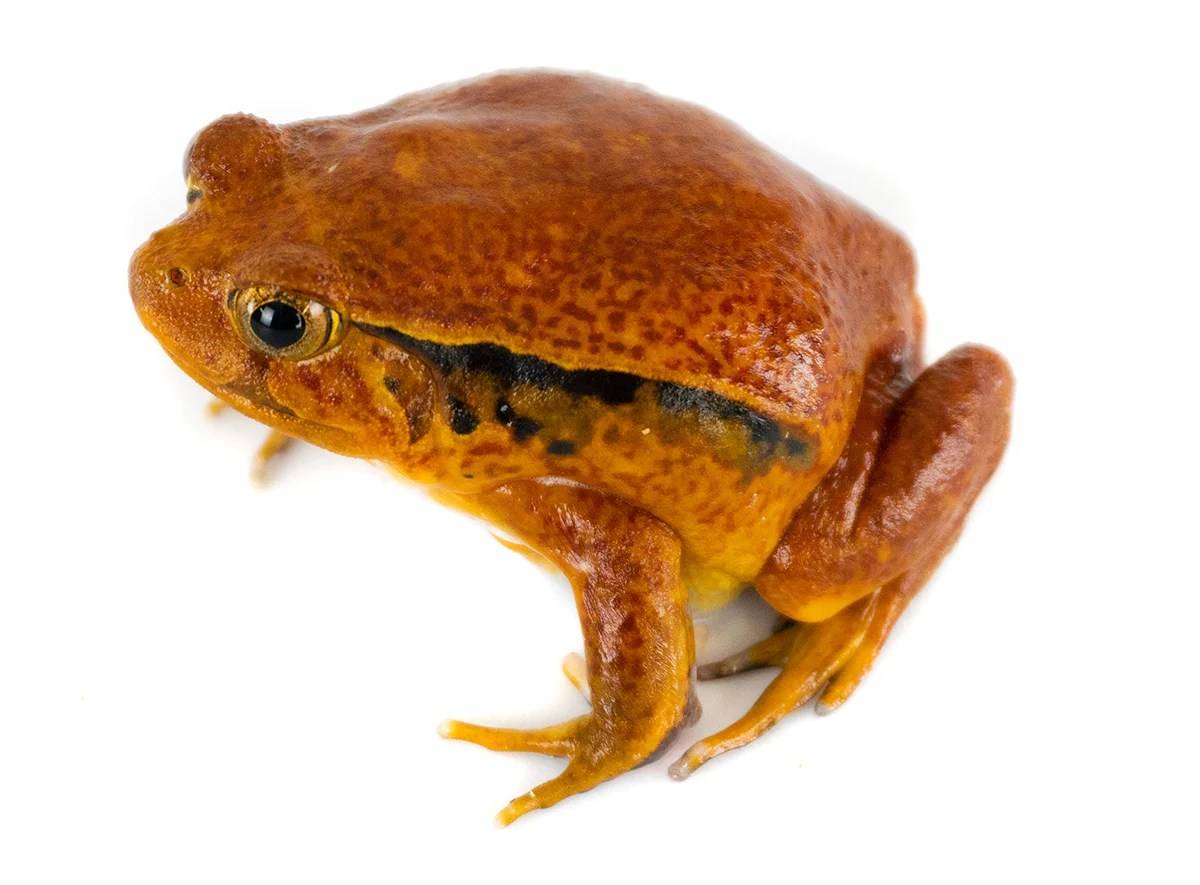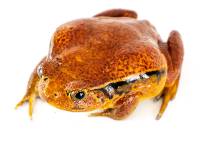Josh's Frogs
Tomato Frog Care Sheet
The Tomato Frog (Dyscophus guineti) is named for its red coloration and roundness that resembles tomatos. They're part of the microhylidae family, commonly called narrow-mouthed frogs and is the largest family of frogs on earth.
Housing
For a pair of adult tomato frogs, a 20 gallon long or an 18x18x12 front opening enclosure is sufficient. As this species is semi-fossorial, a good substrate that facilitates this behavior, such as coco fiber, is best. Live plants that root in multiple places and don't need a lot of nutrients from the soil are idea for this type of setup. Pothos is a good example of an ideal plant to be used with Tomato Frogs. A clean water dish large enough for soaking should be avalable at all times in the enclosure.
Temperature and Humidity
Temperature for the Tomato Frog should be kept in the mid to low 70's, which is great for the typical home environment. Thermometers are a great way to monitor conditions within the tank.
Humidity should be kept within the 50-70% range, and can be monitored using a hygrometer.
Size and Age
Adult female Tomato Frogs can reach almost 4"" in length, where males only usually reach no more than 2.5"". They can live up to 10 years in captivity, though could live longer with ideal care.
Feeding
Tomato Frogs have a deceptively small mouth in relation to their body size so, at most, they should be fed 1/2"" crickets or small dubia roaches. Smaller froglets can be fed 1/4"" crickets.

Sexing
Sexing adult Tomato Frogs is pretty straightforward and can usually be done pretty reliably based on size. Other differences are that females are more red and males are more orange or yellow. You can can also see reproductive tracts on males on both sides of their bellies. These will appear as distinct white lines just under the skin.
Color/Pattern
Adult Tomato Frogs are much prettier than their offspring who are usually a light brown color separated from the white underbelly by a darker brown band starting at the eye. As they age, the coloration turns into an orange or red with the band and underbelly staying the same. Most individuals will also have a rhomboid marking on their backs.
Social Behavior
As long as enough space is provided, more than 2 frogs can be kept in the same enclosure. Males generally aren't aggressive unless breeding conditions are met.
Breeding
There's evidence that Tomato Frogs need to be cycled in order to breed, which involved an extended dry period followed by a period of steadily increasing humidity and heavy feeding. After this, the frogs should be placed in a rain chamber where the female can lay between 1000 and 1500 eggs. Tadpoles hatch after about 3 days and take about a month and a half to metamorphose.
Natural Range
This species occurs widely along the eastern rainforest belt of Madagascar, between 150-900 meters above sea level. It's a very secretive species and probably occurs at many more localities than records indicate. The northernmost locality (Sambava) has not been confirmed since its original description. Most records are concentrated in east-central Madagascar from Antsihanaka south to Fieranana, with isolated records further south at Vondrozo and Soavala (IUCN Redlist).
History in the Hobby
Tomato Frogs have long been desired in the hobby due to their bright red coloration and ease of care. However, they are classified as CITES II species, so imports are limited and captive breeding programs supply a good chunk of frogs in the hobby.

